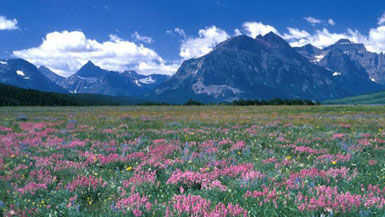Our precious natural areas desperately need restoration, protecting them from climate impacts and ecological stressors – increasing drought, wildfires, sea level rise, species migration, and invasive species.
Federal agencies are coming together to work with states, tribes, and local partners to preserve and restore natural treasures under the Resilient Lands and Waters Initiative.
The agencies are the Department of Interior (DOI), Department of Agriculture (USDA), EPA, National Oceanic and Atmospheric Administration (NOAA), and US Army Corps of Engineers.
These areas are the initial focus:
- Southwest Florida, which includes the Everglades – the largest subtropical wilderness in the US – coastal mangroves, sea grasses, oyster reefs, and estuaries. The region faces threats from increasing urbanization and land use changes to invasive species, rising seas, and shifting temperature patterns. It is home to the critically endangered Florida panther.
- The Great Lakes: restore coastal wetlands to mitigate floods and serve as carbon sinks.
- Snohomish River watershed in Puget Sound, Washington State: restore tidal wetland habitats, increase flood storage capacity and restore floodplains.
- California Headwaters, North Central Coast and Russian River Watershed: reduce flood risks and increase water supply reliability, and restore habitats
- Crown of the Continent: the wildest portion of Montana’s Rockies is the most diverse, intact ecosystem in the US. The focus is on connecting habitats and building ecosystem resilience to ensure long-term health.
- In Hawaii, projects will be in West Hawaii, West Maui, and Oahu to improve the resilience of coral reefs, prevent shoreline erosion, remove invasive species, restore streams, wetlands, and fishponds, and prevent wildfire impacts.
Glacier National Park is part of Crown of the Continent: 
"As historic drought continues to plague the West Coast, there is an enormous opportunity and responsibility across federal, state and private lands to protect and improve the landscapes that generate our most critical water supplies," says Tom Vilsack, Secretary of Agriculture. "Healthy forests and meadows play a key role in ensuring water quality, yield and reliability throughout the year. These partnerships will help us add resiliency to natural resource systems to cope with changing climate patterns."
The Resilient Lands and Waters initiative is an integral part of the Obama Administration’s Climate and Natural Resources Priority Agenda, a first of its kind, comprehensive effort across the federal government to support resilience of America’s vital natural resources. These initiatives will also greatly increase these areas’ ability to store carbon in trees and soil.
Renewed easily for the last 50 years, the Land and Water Conservation Fund will expire at the end of September unless Congress reauthorizes it. The fund, which comes from offshore oil and gas royalties, provides the money to purchase land, waterways and wetlands at the federal, state and local levels. President Obama wants it to be fully funded at $900 million, but Congress has yet to act.
Read our article, Some Good News: Forests Are Being Restored.
Learn more:

